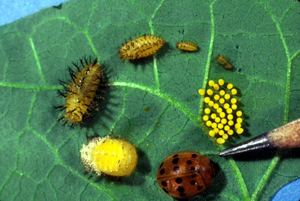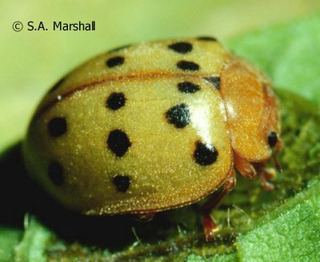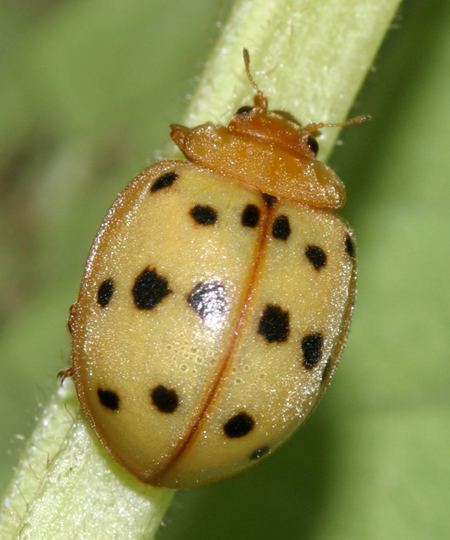Kingdom Animalia Subfamily Epilachninae Scientific name Epilachna varivestis Higher classification Epilachna Order Beetle | Family Coccinellidae Genus Epilachna Phylum Arthropoda Rank Species | |
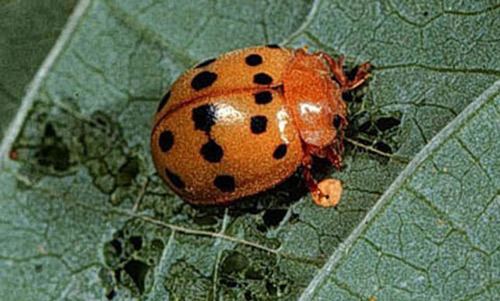 | ||
Similar Beetle, Epilachna, Epilachna borealis, Spined soldier bug, Pediobius foveolatus | ||
The Mexican bean beetle, Epilachna varivestis, is a species of lady beetle which is a notorious agricultural pest. It is one of the few North American lady beetles that feed on plants rather than other insects. It is found throughout Mexico and the eastern United States, and is abundant in the wetter and more heavily irrigated areas west of the Rocky Mountains. It does not tolerate extremely dry areas.

It is similar in appearance to other lady beetles, oval-shaped and bearing eight black spots on each elytron. Its overall color is quite variable, ranging from bright red to rusty brown to golden yellow. It is 6 or 7 millimeters long. The eggs are yellow, about 1.3 millimeters in length, and glued in clusters of up to 75 on the undersides of leaves. The larvae are usually yellow, spiny, and pill-shaped. Each is approximately 1.5 millimeters in length when first emerged, and grows up to one centimeter long before pupation. The larva attaches its anal segment to the underside of a leaf and hangs there to pupate.
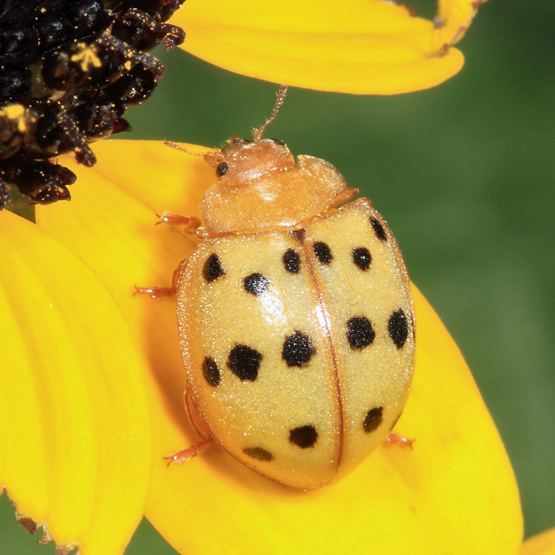
The Mexican bean beetle feeds on beans and other legumes. It can be found on a great variety of bean plants, including common bean varieties (Phaseolus vulgaris), lima bean (Phaseolus lunatus), cowpea and azuki and mung beans (Vigna spp.), and soybean (Glycine max). It will also attack other legumes such as alfalfa (Medicago sativa) and various clovers (Trifolium spp.). Adult beetles may eat the fruits and flowers of the plants, but generally prefer the leaves. They eat the tender parenchyma of the leaves from the underside, leaving the upper epidermis intact. This gives the leaf a lacy, "skeletonized" appearance. The larvae also eat the leaves, and they do much more damage than the adults.

Adults emerge from dormancy in late spring, and each female lays several hundred eggs in clusters of 50 to 75 on bean plant leaves. The larvae are voracious feeders, and can inflict heavy damage on a field of bean plants during an infestation. After a few weeks of gorging on plants the larvae pupate in groups under the leaves. They winter as adults, and often travel long distances to find new fields.
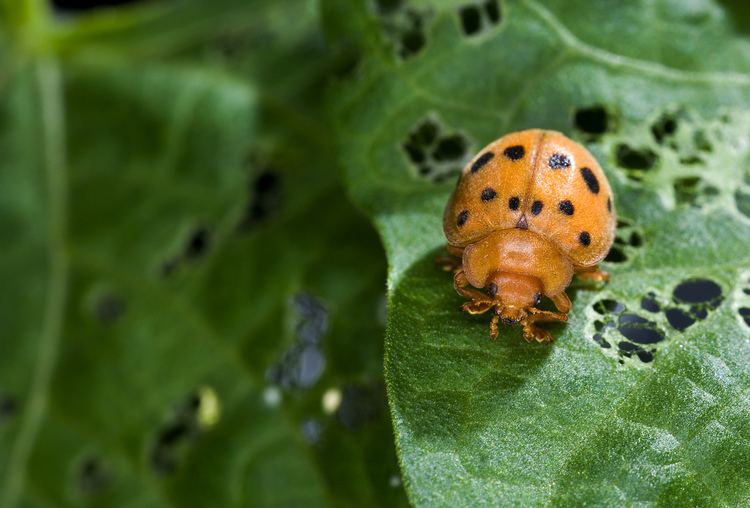
Several types of insects, such as the parasitoid wasp Pediobius foveolatus, show promise as biological pest control agents against the Mexican bean beetle, but insecticides are still routinely used in areas of high economic impact.
